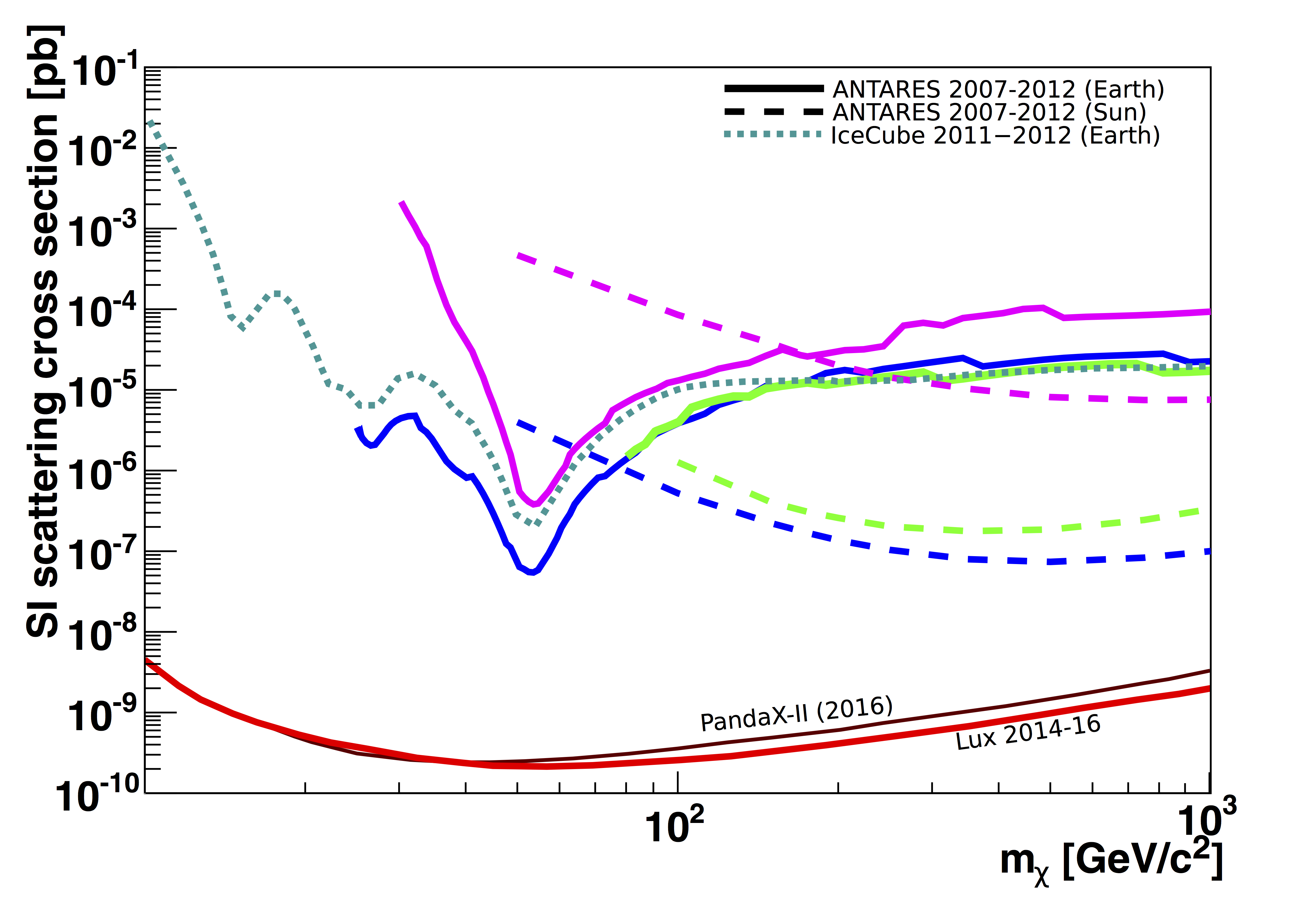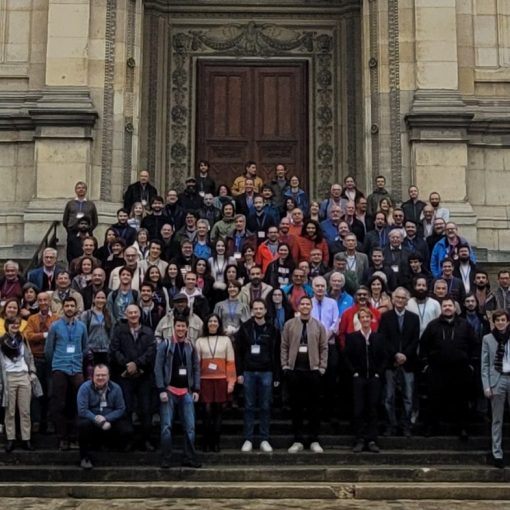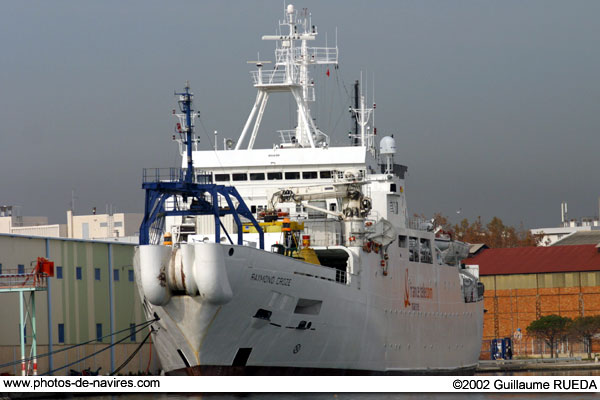One of the most relevant physics topics studied by ANTARES is the nature of dark matter. Weakly Interacting Massive Particles (WIMPs) are the most popular set of candidates. If they are their own anti-particles, we could see the products of their annihilations, among them neutrinos. There are several astrophysical sources interesting to look for dark matter with neutrino telescopes, which can be broadly classified in two categories. In the Sun or the Earth, the accumulation of dark matter occurs after WIMPs are scattered by nuclei and become gravitationally trapped. In other sources like the Galactic Centre, dwarf galaxies and galaxy clusters, the accumulation is produced along the process of structure formation. In the former case, the observations on the neutrino flux are translated into WIMP-nucleon scattering cross sections, whereas in the latter case they give us information about WIMP annihilation cross sections.
The ANTARES collaboration has recently made public the results of two searches for dark matter: one in the Galactic Centre [1] and another in the Earth [2], which complement or expand previous results (Sun [3], [4], [5], and Galactic Centre [6]).
The new results on the Galactic Centre show the potential of neutrino telescopes, and of those in the Mediterranean in particular, in the search for dark matter. As it can be seen in Figure 1, the new limits, which use data from 2007 to 2015, are below those set by IceCube along almost the whole range of masses studied. This improvement comes from the fact that the Galactic Center is better visible from the Northern Hemisphere, since it allows to use the Earth as a filter against the background from atmospheric muons, and the better angular resolution attainable in water. It can also be seen that ANTARES limits are below any other experiment for masses above 30 TeV.

The results of the search for neutrinos produced after the WIMP annihilations in the Earth are shown in Figure 2. For neutrino telescopes, the most interesting case corresponds to masses of the WIMP close to the mass of the Earth’s core nuclei (iron, in particular), since the capture is enhanced, and for spin-independent cross section. The results are not as constraining as those set by direct searches but are also relevant since different systematic uncertainties apply.





